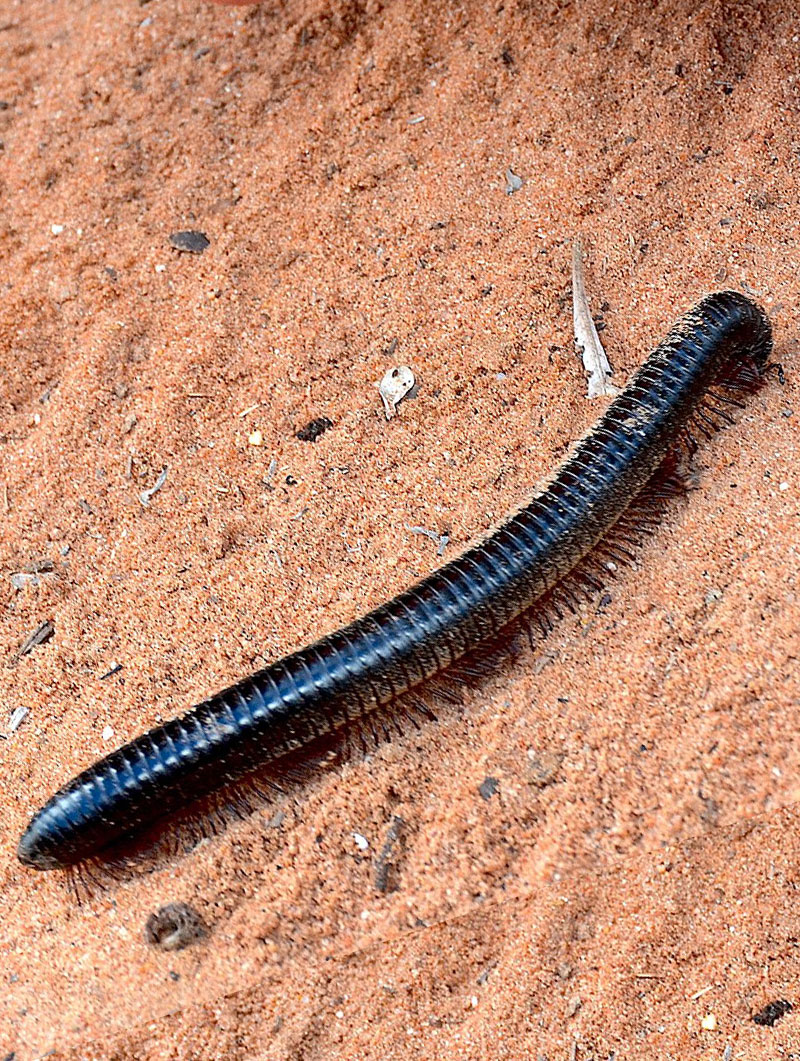Photo by Kmiecik Imagery
Giant African Millipede
Archispirostreptus gigas
Description:
Giant African millipedes are dark brown to black in color and can be identified by their large, rounded bodies with many obvious segments and legs.
Size:
Giant African millipedes range from 4 to 12 inches (10.2-30.5 cm) in length.
Adaptations:
- A millipede can curl its body into a tightly coiled ball to protect its head, legs, and underside.
- Millipedes can secrete a fluid (called repugnatorial fluid) from their body segments for defense. This fluid has a foul taste and smell, deterring potential predators.
- Giant African millipedes have poor eyesight and rely largely on their sense of touch. They can feel with their antennae and their legs.
Diet:
In the wild, adult millipedes are detritivores, consuming dead and decaying organic matter. The millipedes at Cosley Zoo are fed fruits and vegetables.
Reproduction:
To reproduce, a male wraps itself around a female and deposits sperm onto her body. The female then lays hundreds of eggs in a hole in the ground. After about three months, the eggs hatch. The young are white in color and only have a few body segments. They molt their exoskeletons within the first 12 hours after hatching. There is no parental care after the young hatch. It takes several years for a millipede to reach maturity.
Shelter and space needs:
Giant African millipedes are found in the rain forests of subtropical western Africa. They are most often found in warm, dark places on the forest floor such as rotting wood and burrows. Giant African millipedes are known to live communally.
Life expectancy:
In the wild, giant African millipedes can live between five and seven years. In human care, their life expectancy increases to up to 10 years.
Relationship with man:
Giant African millipedes are sometimes kept as pets. As detritivores, millipedes play an important role in their ecosystems: consuming the decaying plant material speeds up the time it takes to recycle the nutrients stored in these substances, and the nutrients are then returned into the environment in a more easily used form through the millipedes’ feces.
Fun Facts:
- The word millipede means “thousand feet”; however, the giant African millipede doesn’t actually have 1,000 legs. A full-grown millipede has 30-40 body segments, each with four legs. With each molt a new body segment with four additional legs develops. Almost every segment of its body also has two pairs of internal organs!
- The giant African millipede is the largest of the 10,000 species of millipede.
- Millipedes breathe through tiny holes on their bodies called spiracles.
- Giant African millipedes are nocturnal.






